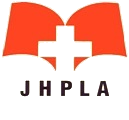Japan Hospital Patients’ Library Association
President: Yu Kikuchi(Hospital Patient Librarian, Health Librarian)
What is a hospital patient library?
Due to biological laws, diseases and disabilities occur with a certain probability
within a group, so illnesses and disabilities are not the responsibility of the individual.
What does a certain probability mean? If the incidence rate is 10%, that means 1 out
of 10 people will get sick, and the remaining 9 people will stay healthy. However, even
with the latest medical science, it is not possible to determine who will develop the
disease. At most, we can only advise people with chronic illnesses, the elderly, and
young children to be careful, as they are more likely to get infected. Humanity,
realizing that diseases and disabilities are not the responsibility of the people
themselves, established medical and social welfare systems to protect the human
rights of these people and guarantee their livelihoods.
The hospital patient library is located within the hospital as an institution that
guarantees citizens access to education, culture, and medical information even when
they are sick.
Japan‘s Patient Libraries:A Brief Overview
Yu Kikuchi, President of the Japan Hospital Patient Library Association
In 1974, the specialized organization “Japan Hospital Library Research Association” (later renamed the “Japan Hospital Patient’s Library Association” JHPLA) was established as the first movement dedicated to patient libraries in Japan. In the same year, a nationwide survey was conducted, revealing the overall situation. The history of library services within hospitals can be summarized as follows:
| 1. | Self-Service by Patients in Long-Term Care Facilities: Initially, patients themselves managed library services in facilities such as tuberculosis wards. |
| 2. | Volunteers: Volunteer staff took charge of library services. |
| 3. | Librarians with Dual Roles: In some places, librarians also handled hospital duties. |
| 4. | Public Libraries on Wheels: Public libraries provided services through mobile libraries visiting hospitals. |
During the 1990s, the situation underwent a significant transformation. The concept of “informed consent” emerged in the United States, where doctors thoroughly explain treatments to patients, who then give their consent before starting treatment. To ensure patients fully understand their own illnesses, medical knowledge became essential for patients as well.
In 2002, the Shizuoka Cancer Center became the pioneer in Japan, launching a comprehensive patient library service. Located on the ground floor lobby, the library covers an area of 120 square meters. It features low bookshelves, sofas, and carpeted floors. The collection includes books, magazines, newspapers, CDs, and even an audiovisual room. Librarians handle lending and reference services, and they also introduced a lending service for patients’ rooms. Additionally, patients can access the library’s holdings from their rooms and make reservations. This initiative inspired other university and municipal hospitals to gradually establish patient libraries with dedicated librarians.
I presented these developments at the 2006 IFLA Conference (held in Seoul, South Korea) during a poster session.
Over 20 years have passed since international conferences, and in Japanese hospitals
| • | Two librarians now manage both medical libraries within hospitals and patient libraries. |
| • | Volunteer staff handle patient library lending, while librarians take care of reference services. |
Although public libraries occasionally place books in municipal hospitals and conduct regular visits for lending, this approach hasn’t gained widespread adoption.
The history of patient libraries in Japan has evolved from self-service by patients to a collaborative model involving librarians and volunteers. Currently, the collaboration between librarians and volunteers is becoming the standard.
Let us hope that patient libraries continue to spread across Asian countries, enriching healthcare services. We look forward to exchanging information and cooperating with one another.
